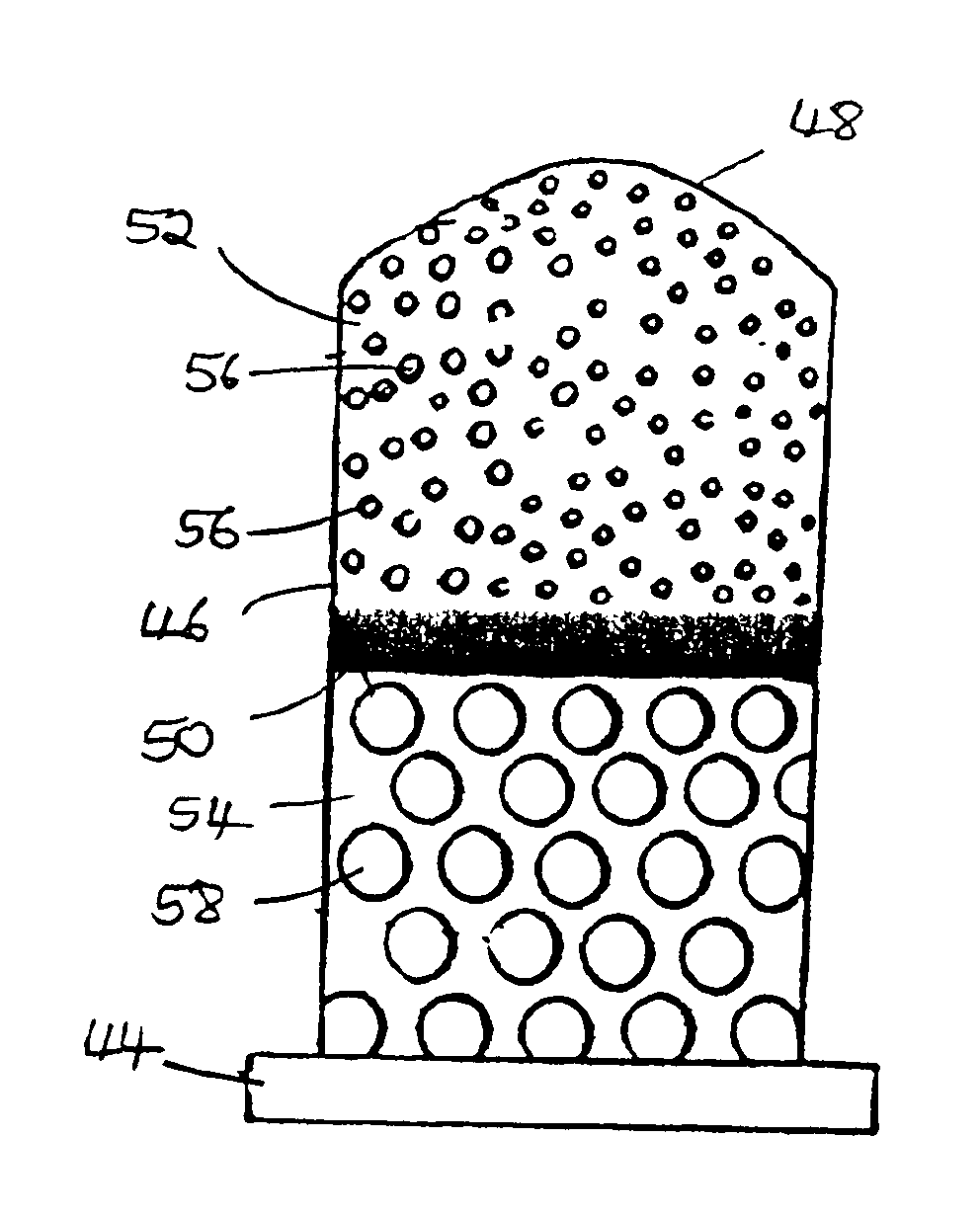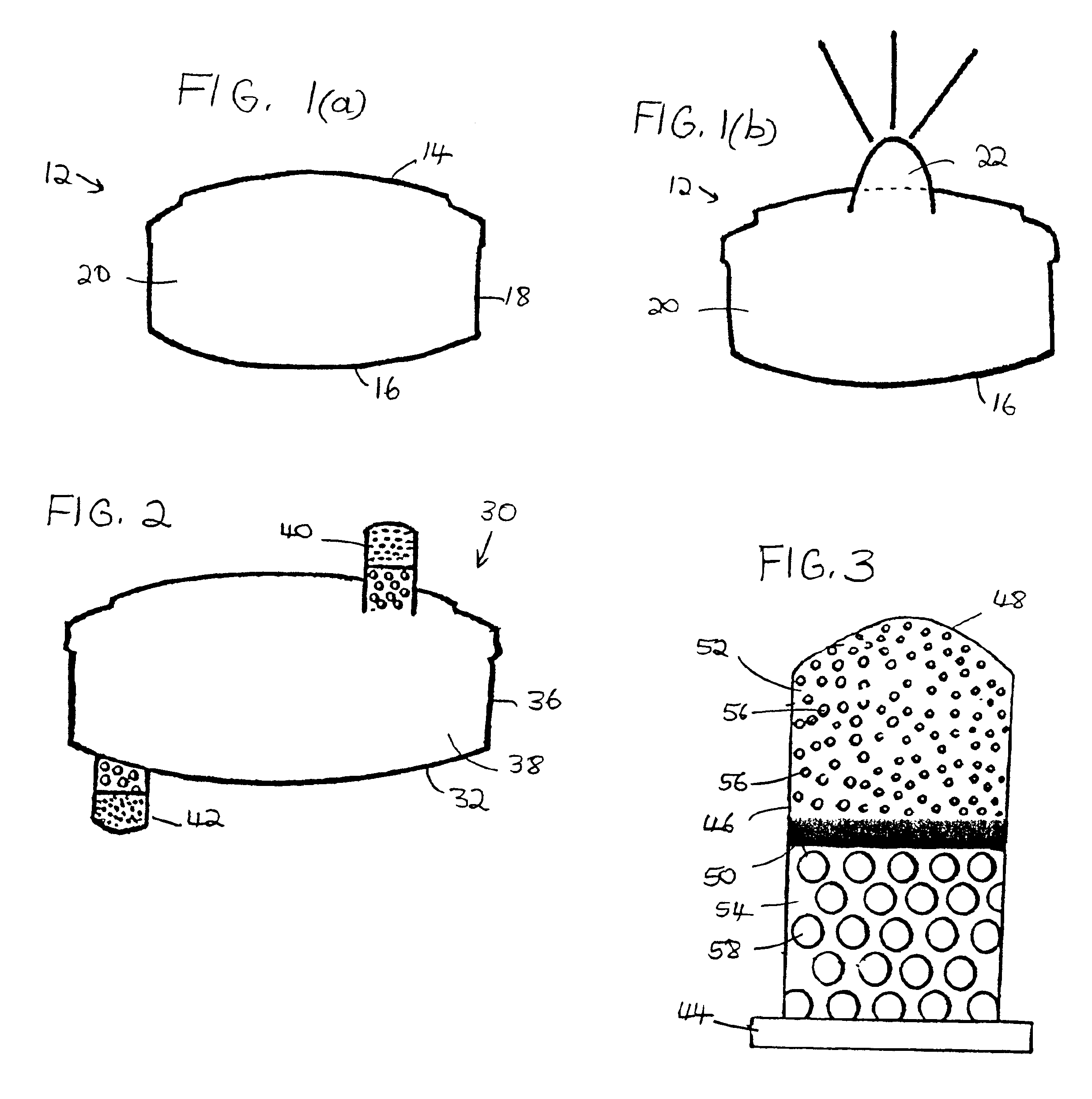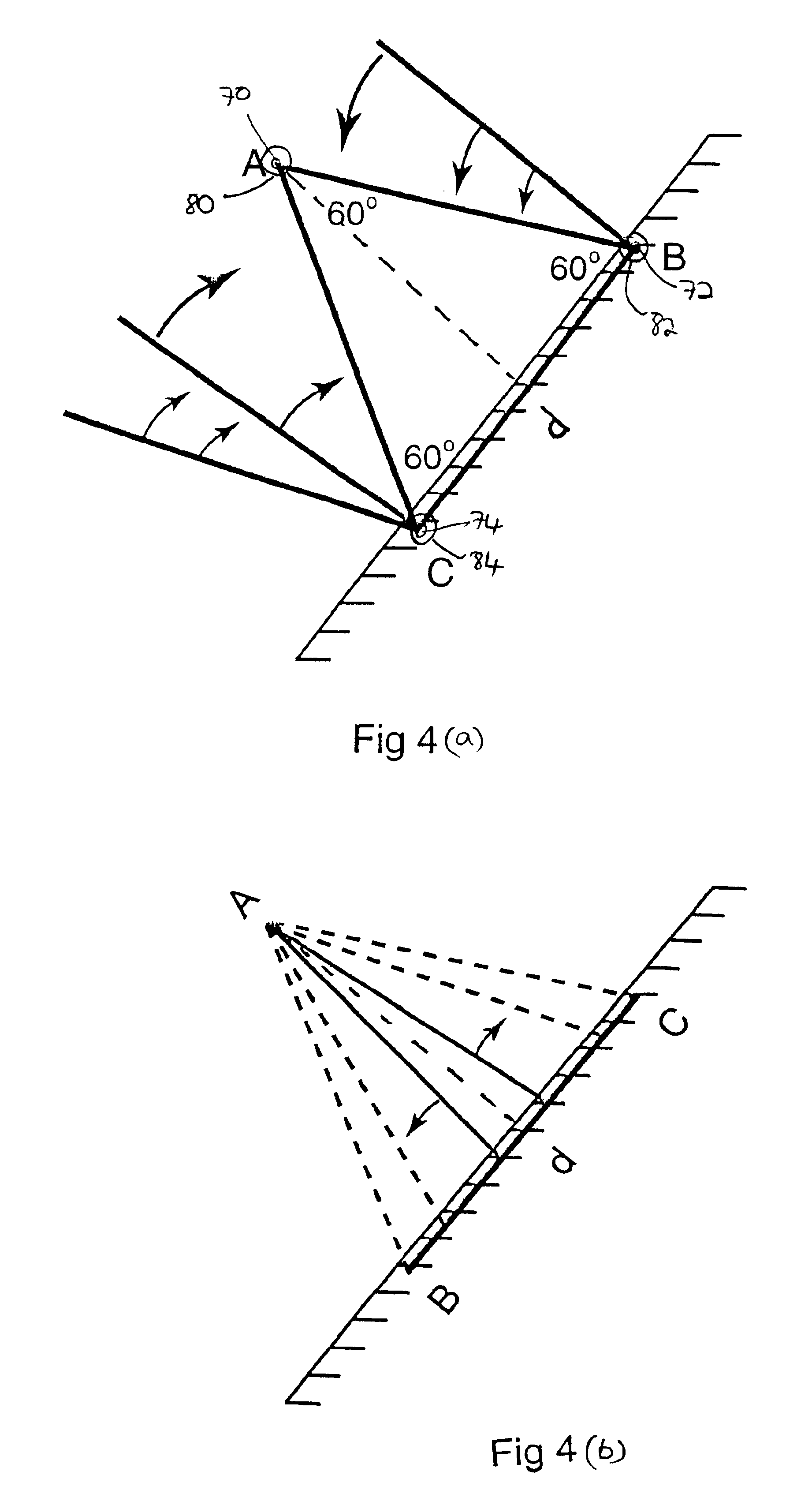Method and apparatus for detecting target objects
a target object and detection method technology, applied in the field of target object detection methods and devices, can solve the problems of unacceptably high, unfavorable human inhabitants, and grave and constant threat to human inhabitants, and achieve the effects of cost-effectiveness, cost-effective and feasible, and minimize the risk to the lives of trained personnel and animals
- Summary
- Abstract
- Description
- Claims
- Application Information
AI Technical Summary
Benefits of technology
Problems solved by technology
Method used
Image
Examples
example 1
A small rectangular plastic container may be attached to the rats' back as if it were a carry pack) (see FIGS. 5(a) and 5(b)). A carry pack can consist of a small light plastic / rubber container having an elliptical shape which is fastened to the rats' back using a small harness of plastic or heavy cloth. The carry pack can house a small battery and machine that dispenses small pellets through a rear opening at regular set time intervals. These pellets can be of bright color and may also fluoresce under ultraviolet light and possess a very distinctive odor to aid in their localization by sight and / or smell the next day after the rats have been removed.
Specifically, the carry pack can be a small rectangular plastic box containing a number of small colored pellets (about 6 mm in diameter) which releases colored pellets, one at a time, every predetermined amount of seconds. Consequently, the area where the rat spends most of its time “searching” for a landmine will have a disproportiona...
example 2
A carry pack containing a small transmitter which emits an individually numbered signal every X number of seconds, which in turn, is detected by three equidistantly placed antennae (mounted on posts, as previously described) so that the signal is triangulated, analyzed and then plotted on a computer screen that is scaled to the area and shape of the specific enclosure. With this method and apparatus, mine clearing personnel have more information, such as the number and the likely locations of suspect landmines. When they approach these areas alone or with their dogs, there is a greater margin of safety, effectiveness and efficiency. More discrete units of land can be safely cleared in less time and at less overall cost. This type of objective proficiency testing may help develop a high rate of accuracy relative to normal data from conventional landmine removal training programs.
More specifically, this variation consists of another type of carry pack containing a small battery powere...
example 3
A carry pack contains a small semi-flexible arm which protrudes anteriorly from the left side of the rat's head, into its field of vision. At the end of this arm is a two-armed Y-shaped prong, as shown. The prong at the end of the arm lies within reach of the rat's jaws. On the tip of the outer prong-arm is a small LED light. The entire part of the inner prong-arm serves as a biting surface for the rat. When the rat bites on the inner prong-arm, a signal is emitted from the rat's carry pack that accomplishes two things: (1) Registers the rat's exact location coordinates to the operator' electronic tracking field-display apparatus, and (2) Activates the release of a drug reward from the carry pack after the animal has performed the desired task (finding a mine, and / or digging it up and / or detonating the mine). The reward may be administered to the animal via either microinjection through a cannula that lies implanted in the animal's brain, by microinjection into the subcutaneous tiss...
PUM
 Login to View More
Login to View More Abstract
Description
Claims
Application Information
 Login to View More
Login to View More - R&D
- Intellectual Property
- Life Sciences
- Materials
- Tech Scout
- Unparalleled Data Quality
- Higher Quality Content
- 60% Fewer Hallucinations
Browse by: Latest US Patents, China's latest patents, Technical Efficacy Thesaurus, Application Domain, Technology Topic, Popular Technical Reports.
© 2025 PatSnap. All rights reserved.Legal|Privacy policy|Modern Slavery Act Transparency Statement|Sitemap|About US| Contact US: help@patsnap.com



